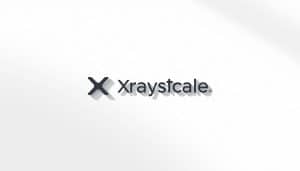Cryptocurrency enthusiasts and investors have long been captivated by the dominance of Ethereum in the crypto market. However, a new contender has emerged in the form of Solana, with its recent advancements causing ripples of excitement and speculation. Could Solana pose a real challenge to Ethereum’s reign?
In recent months, Solana has made significant strides in terms of scalability and transaction speed, boasting lightning-fast processing times and low fees. This has caught the attention of many who have grown frustrated with Ethereum’s network congestion and high gas fees. With Solana’s innovative technology, it’s no wonder that some are starting to question whether Ethereum’s dominance is under threat.
As we delve deeper into the advancements and potential of Solana, we will explore the key differences between the two platforms and analyze how Solana’s unique features could position it as a viable alternative to Ethereum. Join us as we examine whether Solana has what it takes to challenge Ethereum’s long-standing reign and reshape the crypto market landscape.
Ethereum’s Dominance in the Crypto Market
When it comes to the crypto market, Ethereum has been a dominant player for quite some time. With its robust ecosystem, smart contract capabilities, and large developer community, Ethereum has established itself as the go-to platform for decentralized applications (dApps) and decentralized finance (DeFi) projects.
However, the emergence of Solana in recent crypto news has sparked a debate on whether it can challenge Ethereum’s dominance. Solana has made significant advancements in terms of scalability and transaction speed, which are essential factors for a blockchain network to handle a high volume of transactions efficiently.
Investors and experts are closely comparing Solana’s performance to Ethereum and looking into its distinguishing features that position it as a potential Ethereum rival. Solana’s unique technological innovations, such as its Proof-of-History (PoH) consensus algorithm and Tower BFT (Byzantine Fault Tolerance) consensus mechanism, have gained attention in the cryptocurrency community.
Recent crypto updates have shed light on Solana’s remarkable processing times and significantly lower fees compared to Ethereum. Solana claims to be capable of processing 65,000 transactions per second, dwarfing Ethereum’s capacity. This scalability advantage has attracted developers and projects looking for a more efficient and cost-effective platform.
Notable projects and developments on Solana, such as decentralized exchanges (DEXs), NFT marketplaces, and gaming platforms, have showcased the potential of the platform to disrupt Ethereum’s ecosystem. Furthermore, investors are closely monitoring Solana’s trajectory as it aimsto compete with Ethereum, as they consider the future implications of the rise of Solana in the crypto landscape.
In recent crypto analyses, Solana’s scalability and transaction speed have been compared to Ethereum, highlighting the importance of these factors in attracting users and developers. The ability to process transactions quickly and handle high volumes with low fees is an attractive proposition for both users and businesses in the cryptocurrency space.
The growing interest in Solana as a viable alternative to Ethereum in the cryptocurrency community can be attributed to several factors. The frustration with Ethereum’s network congestion and high gas fees has pushed users to explore other options, and Solana’s performance and technological innovations have positioned it as a strong contender. Additionally, the rising popularity of decentralized finance (DeFi) and the need for scalable solutions have further fueled the interest in Solana.
The Emergence of Solana

In recent crypto news, there has been increasing speculation about whether Solana’s recent advancements can challenge Ethereum’s dominance in the crypto market. Experts are closely examining Solana’s performance and its distinguishing features that position it as a potential rival to Ethereum.
Solana brings several technical innovations to the table that differentiate it from Ethereum. Notably, Solana utilizes a unique consensus algorithm called Proof-of-History (PoH) and a consensus mechanism known as Tower BFT. These innovations have garnered attention for their ability to provide remarkable processing times and significantly lower fees compared to Ethereum.
Furthermore, Solana has caught the attention of the cryptocurrency community due to its scalability and transaction speed. Recent crypto analyses have highlighted Solana’s impressive performance in these areas, raising questions about Ethereum’s ability to keep up.
But it’s not just the technology that has investors and experts talking. Solana has seen the emergence of notable projects and developments, from decentralized exchanges (DEXs) and NFT marketplaces to gaming platforms. These projects demonstrate Solana’s potential to disrupt Ethereum’s ecosystem and attract users and developers seeking alternatives.
The growing interest in Solana as a viable alternative to Ethereum can be attributed to several factors. Firstly, frustration with Ethereum’s network congestion and high gas fees has led users to explore other options. Secondly, the rising popularity of decentralized finance (DeFi) has fueled the need for scalable solutions, and Solana’s advancements position it as a promising candidate.
As Solana continues to make waves in the crypto sphere, experts and investors are closely monitoring its trajectory. The implications of Solana’s rise have the potential to reshape the future landscape of decentralized applications and the overall crypto market.
With its impressive technological innovations, scalability, and transaction speed, Solana is challenging Ethereum’s dominance and capturing the attention of the cryptocurrency community. The question remains: can Solana sustain its momentum and become a true contender in the crypto market? Stay tuned for more updates as the Solana vs. Ethereum debate unfolds.
Advancements in Scalability and Transaction Speed
When comparing Solana to Ethereum in recent crypto news, one of the key factors that distinguishes Solana is its impressive performance in terms of scalability and transaction speed.
Solana’s scalability is a major advantage that positions it as a potential rival to Ethereum. While Ethereum has faced challenges with network congestion and high gas fees, Solana’s unique technological innovations have addressed these issues. Its Proof-of-History (PoH) consensus algorithm and Tower BFT consensus mechanism contribute to its remarkable processing times and significantly lower fees compared to Ethereum.
In recent crypto updates, experts have taken notice of Solana’s scalability and transaction speed, which have caught the attention of the crypto community. Solana’s ability to handle a high throughput of transactions in a highly efficient manner has raised questions about Ethereum’s ability to keep up.
Investors, too, are reacting to the emergence of Solana as a potential alternative to Ethereum in the crypto sphere. The growing interest in Solana can be attributed to frustration with Ethereum’s network congestion and high gas fees, as well as the rising popularity of decentralized finance (DeFi) and the need for scalable solutions.
Moreover, Solana brings several technical innovations to the table when compared to Ethereum. The combination of its Proof-of-History (PoH) consensus algorithm and Tower BFT consensus mechanism allows Solana to achieve fast transaction confirmation times and maintain a high level of security.
Notable projects and developments are also taking place on Solana, which could disrupt Ethereum’s ecosystem. Decentralized exchanges (DEXs), NFT marketplaces, and gaming platforms built on Solana demonstrate the platform’s potential as a thriving ecosystem of decentralized applications.
As Solana continues to gain momentum, experts are closely monitoring its trajectory and the implications it may have on the future landscape of decentralized applications and the overall crypto market. The rise of Solana as a viable alternative to Ethereum highlights the importance of scalability and transaction speed in the ever-evolving world of cryptocurrencies.
Solana vs Ethereum: Key Differences
Solana and Ethereum are two prominent players in the cryptocurrency market, but there are several key differences that set them apart. Let’s take a closer look at these distinctions:
- Scalability: One of the main pain points of Ethereum has been its scalability issues. As the popularity of decentralized applications (dapps) and decentralized finance (DeFi) has grown, Ethereum’s network has become congested, resulting in slower transaction times and higher fees. Solana, on the other hand, has been designed to prioritize scalability. Its innovative Proof-of-History (PoH) consensus algorithm and Tower BFT consensus mechanism allow for fast transaction confirmation times, even with a high number of transactions.
- Transaction Speed: Solana boasts impressive transaction speeds, which have caught the attention of the crypto community. With its unique technological innovations, Solana can process thousands of transactions per second, making it a potentially more efficient option compared to Ethereum’s current limitations.
- Fees: Ethereum’s high gas fees have been a source of frustration for users. Solana addresses this issue by offering significantly lower fees for transactions, making it more economical for users to interact with the network.
- Technological Innovations: Solana introduces several technical innovations that differentiate it from Ethereum. The PoH consensus algorithm provides a historical record of events, ensuring fast and accurate transaction ordering. Additionally, the Tower BFT consensus mechanism brings a high level of security to the network.
- Growing Ecosystem: Solana’s emergence as a potential rival to Ethereum is further strengthened by the growth of its ecosystem. Projects and developments such as decentralized exchanges (DEXs), NFT marketplaces, and gaming platforms are gaining traction on the Solana network. This demonstrates the platform’s potential to disrupt Ethereum’s dominance in these areas.
While Ethereum remains the leading blockchain platform, the rise of Solana and its unique advantages have attracted attention. Experts and investors are closely monitoring Solana’s trajectory as it aims to challenge Ethereum’s dominance in the crypto market. The scalability, transaction speed, and lower fees offered by Solana, coupled with its growing ecosystem, are contributing factors to the increasing interest in Solana as a viable alternative to Ethereum.
Solana’s Unique Features
When comparing Solana to Ethereum, it’s important to understand the distinguishing features that position Solana as a potential competitor. Here are some key aspects of Solana’s technology that have garnered attention in recent crypto news:
- Performance: Solana prides itself on its impressive performance and processing capabilities. With a unique combination of the Proof-of-History (PoH) consensus algorithm and the Tower BFT consensus mechanism, Solana is able to achieve remarkable transaction speeds and low fees, outperforming Ethereum in terms of scalability and efficiency.
- Scalability: Scalability has been a major challenge for Ethereum, with network congestion and high gas fees hindering its growth. Solana, on the other hand, has designed its blockchain to handle high throughput, allowing for thousands of transactions per second. This scalability advantage positions Solana as a promising alternative to Ethereum in terms of supporting mass adoption and decentralized applications (dApps).
- Technological Innovations: Solana’s unique technological innovations go beyond just scalability. Its architecture incorporates features like parallel processing, tower consensus, and a decentralized clock to ensure accurate transaction ordering. These innovations not only contribute to Solana’s impressive performance but also provide a strong foundation for future developments and innovations on the network.
- Growing Ecosystem: Solana’s ecosystem is rapidly expanding with a range of exciting projects gaining traction. Decentralized exchanges (DEXs), non-fungible token (NFT) marketplaces, and gaming platforms are just a few examples of the growing ecosystem on Solana. These projects are attracting attention as they take advantage of Solana’s fast and cost-effective blockchain infrastructure.
As Solana continues to make advancements, the interest from both experts and investors is growing. Experts are closely monitoring Solana’s trajectory as it aims to challenge Ethereum’s dominance in the crypto market, while investors are evaluating the potential of Solana as a viable alternative. The rise of Solana has the potential to disrupt Ethereum’s ecosystem, as its unique features and growing ecosystem position it as a formidable competitor.
In the next section, we will delve deeper into the implications of Solana’s rise and explore how it compares to Ethereum in terms of scalability, transaction speed, and other significant factors.
Can Solana Challenge Ethereum’s Dominance?
Solana’s recent advancements have sparked discussions about its potential to challenge Ethereum’s dominance in the crypto market. As experts and investors closely monitor Solana’s trajectory, there are several key factors to consider:
- Performance and Scalability: Solana has gained attention for its impressive transaction speed and scalability. While Ethereum has faced scalability issues, Solana’s unique technological innovations, such as its Proof-of-History (PoH) consensus algorithm and Tower BFT consensus mechanism, have allowed for faster processing times and significantly lower fees.
- Technological Innovations: Solana brings a range of technical innovations to the table compared to Ethereum. Its use of PoH, combined with a decentralized clock, creates a verifiable historical record of events. This innovative approach makes it easier to verify and order transactions, enhancing efficiency and security.
- Ecosystem Growth: Solana’s ecosystem has been rapidly expanding, with notable projects gaining traction on the network. Decentralized exchanges (DEXs), NFT marketplaces, and gaming platforms are among the applications being developed on Solana. This growing ecosystem indicates the increasing interest and confidence in Solana as a viable alternative to Ethereum.
- Expert Opinion: Experts have acknowledged Solana’s potential to challenge Ethereum’s dominance. They recognize Solana’s technological advancements and its ability to address scalability and transaction speed issues that Ethereum has been grappling with. As Solana continues to develop and improve, experts believe it has the potential to disrupt Ethereum’s ecosystem.
- Investor Interest: Investors are also taking notice of Solana’s emergence as an alternative to Ethereum. The increasing interest from investors indicates a growing recognition of Solana’s unique advantages and its potential as a viable long-term investment option in the crypto sphere.
The rise of Solana and its recent advancements have positioned it as a formidable competitor to Ethereum. With its strong performance, scalability, technological innovations, and growing ecosystem, Solana is attracting attention from both experts and investors. While Ethereum still remains the leading blockchain platform, the competition from Solana cannot be ignored. The cryptocurrency community eagerly awaits further developments in Solana’s journey to challenge Ethereum’s dominance in the crypto market.
Conclusion
Solana’s recent advancements have positioned it as a strong contender to challenge Ethereum’s dominance in the crypto market. With its impressive transaction speed, scalability, and innovative technologies like the Proof-of-History (PoH) consensus algorithm and Tower BFT consensus mechanism, Solana offers a compelling alternative for developers and investors.
The rapid expansion of Solana’s ecosystem, with the emergence of decentralized exchanges (DEXs), NFT marketplaces, and gaming platforms, indicates growing interest and adoption. Experts and investors are closely monitoring Solana’s trajectory, recognizing its potential to disrupt Ethereum’s ecosystem.
While Ethereum remains the leading blockchain platform, Solana’s strong performance, scalability, and technological innovations make it a formidable competitor. Its growing ecosystem and investor interest further solidify its position as a long-term investment option.
As Solana continues to evolve and develop, the cryptocurrency community eagerly awaits further developments in its journey to challenge Ethereum’s dominance. With its impressive advancements and growing ecosystem, Solana is undoubtedly a force to be reckoned with in the crypto market.
Frequently Asked Questions
Q: What is the focus of the article?
The article focuses on Solana’s potential to challenge Ethereum’s dominance in the cryptocurrency market.
Q: What are some key features of Solana?
Solana offers impressive transaction speed, scalability, and innovative technologies like Proof-of-History (PoH) consensus algorithm and Tower BFT consensus mechanism.
Q: Is Solana’s ecosystem expanding?
Yes, Solana’s ecosystem is rapidly expanding with projects like decentralized exchanges (DEXs), NFT marketplaces, and gaming platforms gaining traction.
Q: Why are experts and investors interested in Solana?
Experts and investors recognize Solana’s potential to disrupt Ethereum’s ecosystem and see it as a viable alternative and long-term investment option.
Q: How does Solana compare to Ethereum?
While Ethereum remains the leading platform, Solana’s strong performance, scalability, technological innovations, and growing ecosystem position it as a formidable competitor to Ethereum.
Q: What can we expect from Solana in the future?
The cryptocurrency community eagerly awaits further developments in Solana’s journey to challenge Ethereum’s dominance.























 Bitcoin
Bitcoin  Ethereum
Ethereum  Tether
Tether  XRP
XRP  USDC
USDC  Solana
Solana  TRON
TRON  Lido Staked Ether
Lido Staked Ether  Dogecoin
Dogecoin  Figure Heloc
Figure Heloc  Cardano
Cardano  WhiteBIT Coin
WhiteBIT Coin  Bitcoin Cash
Bitcoin Cash  Wrapped stETH
Wrapped stETH  Wrapped Bitcoin
Wrapped Bitcoin  USDS
USDS  Binance Bridged USDT (BNB Smart Chain)
Binance Bridged USDT (BNB Smart Chain)  Chainlink
Chainlink  Wrapped eETH
Wrapped eETH  Monero
Monero  WETH
WETH  Stellar
Stellar  LEO Token
LEO Token  Hyperliquid
Hyperliquid  Ethena USDe
Ethena USDe  Zcash
Zcash  Coinbase Wrapped BTC
Coinbase Wrapped BTC  Litecoin
Litecoin  Sui
Sui  Avalanche
Avalanche  sUSDS
sUSDS  Hedera
Hedera  Shiba Inu
Shiba Inu  Dai
Dai  USDT0
USDT0  Mantle
Mantle  PayPal USD
PayPal USD  Toncoin
Toncoin  Cronos
Cronos  World Liberty Financial
World Liberty Financial  Ethena Staked USDe
Ethena Staked USDe  Uniswap
Uniswap  Polkadot
Polkadot  MemeCore
MemeCore  USD1
USD1  Canton
Canton  Aave
Aave  Rain
Rain